All over the world, pigs have become one of the most productive sources of meat due to their body size and their rate of reproduction. Because of this, some people might assume that raising pigs on the farm is easy. There is also the perception that pigs will eat almost anything.
Raising healthy pigs on the farm requires more than just a good feeding regimen. It takes a thorough plan and systematic schedule that was once available only to professional breeders but is now applicable for anyone wishing to raise pigs, including beginners.
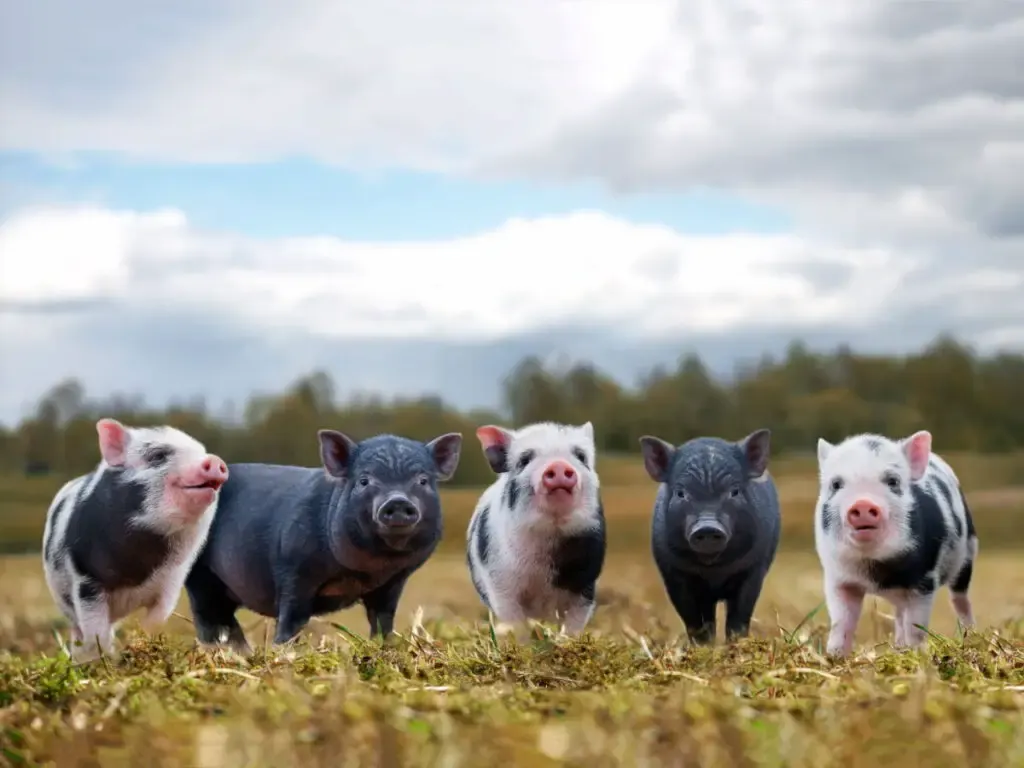
In this article, we will explore in more detail how to raise pigs on the farm, be it on a small-scale farm or on a larger commercial scale.
Start With The Best Breed
There are more than a hundred breeds of domestic pigs that you can investigate. Filtering out the best ones that could yield a good amount of meat in the long term takes a little homework and research.
These mammals come in different sizes, shapes, and colors but the two important traits that you should look for are their growth rate and carcass yield. They are also divided into two categories which are commercial and heritage.
Commercial breeds are fast growers and as a result, they yield a great amount of meat in a short period of time. However, their meat may not be as flavorful as heritage breeds.
On the other hand, heritage breeds could make excellent free-range animals and their meat is juicy and flavorful. Some of them might be a bit hard to handle due to their nature and temperament but that won’t be a big problem once you know how to handle these breeds.
The size of the pigs when they mature plays a big role in how you want them to serve your needs. Of course, you could go for the smaller breeds, but they may not be the soundest options to go with depending on your goals.
When you raise pigs on the farm, you should aim to optimize all resources and space for the best results out of your investment.
With this in mind, you should opt for lean breeds that could produce flavorful meat.
This table shows some of the most popular pig breeds being raised in the United States. Each breed carries its own standards, lifespan, and what they offer to growers:
| Breeds | Height | Weight | Lifespan | Advantages |
| American Landrace | 2.8 – 3 ft | 400 – 800 lbs | 10 – 15 years | Prolific breeder |
| American Yorkshire | 2.9 – 3 ft | 400 – 700 lbs | 6 – 10 years | Tasty/darker meat |
| Berkshire | 2.3 – 2.4 ft | 500 – 600 lbs | 10 – 20 years | Flavorful meat |
| Chester White | 2 – 2.5 ft | 500 – 644 lbs | 6 – 8 years | Lean meat |
| Duroc | 2 – 3 ft | 500 – 750 lbs | 15 – 20 years | Fast grower |
| Hampshire | 2 – 2.9 ft | 500 – 650 lbs | 10 – 12 years | Lean meat |
| Hereford | 2.5 – 3 ft | 600 – 800 lbs | 10 – 15 years | Lean meat |
| Large Black | 2.5 – 2.9 ft | 661 – 750 lbs | 12 – 20 years | Succulent meat |
| Pietrain | 2 – 2.5 ft | 485 – 570 lbs | 10 – 15 years | Lean meat |
| Poland China | 2.3 – 2.9 ft | 530 – 640 lbs | 6 – 10 years | Lean meat |
| Spotted | 2 – 2.9 ft | 500 – 600 lbs | 15 – 20 years | Docile and hardy |
| Tamworth | 1.7 – 2.2 ft | 500 – 600 lbs | 15 – 20 years | Fine-grained meat |
Once you’ve selected a specific breed, then decide on the number of young pigs or piglets that you want to purchase. Like other farm animals, pigs don’t grow well when they are lonely. They need companions to develop properly.
The best time to purchase young pigs would be during the spring and summer months. You can scour the internet or newspaper for any local stock for sale. If you feel the need to see the animals before purchasing, then ask around at any pig farms or farm supply stores that may have availibility.
Generally, pigs are weaned and sold when they reach eight weeks old. So, avoid buying pigs that are weaned at six weeks old because they are less healthy and possess weaker immune systems.
If you see any signs of illnesses, lethargy, or physical abnormalities on the pigs, no matter what the sellers might say to convince you, it is best to avoid buying them at all costs. Healthy pigs look fresh and energetic from just a quick glance.
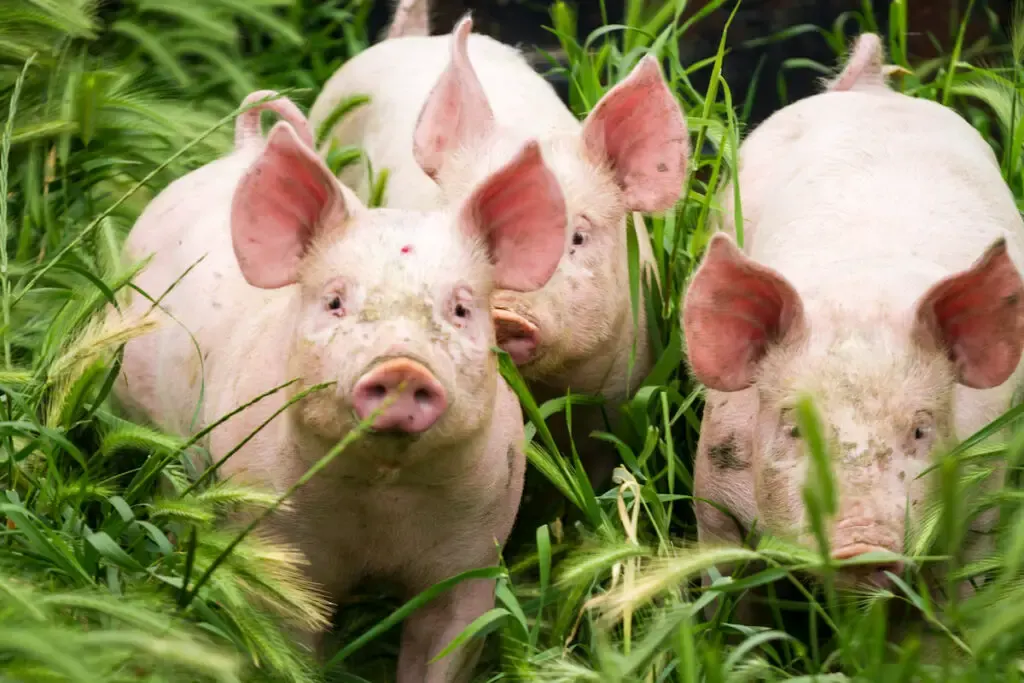
Building An Appropriate Pigpen
Compared to other farms animals, pigs generally require less space. But there’s nothing wrong with providing them with enough room to root and wander inside their pen. A strong, well-constructed, and protected pen will shelter these animals from harsh weather, wet seasons, and predators that could attack them in the middle of the night.
Like any other building project, be sure to check for regulations and laws on building animal housing in your region. Depending on where you live, there might be some fees and permits that you have to obtain before proceeding with this step.
Once you’ve finished with all the legalities, it is time to select a good location for the pigpen. First and foremost, the pigpen should be built on a dry, secured, elevated place that can’t be flooded. Good shade from trees or structures is also important for your pigs to weather the heat in this location.
If possible, find a site that’s located a bit far from any residential areas to avoid noise complaints. Accessibility to roads is a worthwhile consideration to avoid logistics and transportation issues, especially in the winter.
When it comes to building a pigpen, there are no strict rules as to how large or well-equipped the structure should be. Fully grown pigs require at least 20 square feet of space per animal but there is nothing wrong with providing them with an extra of 10 to 30 square feet.
The most important thing is that these animals are comfortable moving, sitting, exercising, eating, and sleeping.
Aside from space, the pigpen itself must be strong and stable to withstand harsh weather. Minimally, the floor of the pen should be raised around 25 inches above the ground while the floorboards should have at least 0.5 to 0.8 inches of space between for ventilation and cleaning purposes.
The pigs’ area should also be divided into different pens according to each phase of their growth and reproduction cycle. The sizes might vary depending on the numbers of expected pigs or piglets that will be placed inside each pen.
Some pig breeders also grow these animals inside portable housing that can be moved to different parts of the farm whenever manure accumulates in one area. This is one of the easiest ways to maintain good hygiene and prevent the pigs from catching diseases.
Then, setting up strong fences on the outside around the pigpen is also important to keep the pigs safe. Aside from predatory attacks, these fences should prevent pigs from escaping. There are many types of fences that you can choose including mesh wire, barbed wire, woven wire, and high-tensile electrical fences.
You can also use portable electric fences to keep the pigs inside a specific area before relocating them to another pen or shelter. Avoid using electrical fences for smaller pigs because they might learn how to escape through the gaps between the wires.
Last but not least, you must also build feeders to feed these animals. There are two options to consider: you either can set a specific time each day to feed the pigs or use self-feeders.
Scheduling a feeding time for the pigs can be quite a hassle, especially in the long term or when your day gets busy. On the other hand, using self-feeders might promote overeating habits in pigs if you don’t monitor the amount of feed that you give.
Either way, each method has its own pros and cons. So, it’s totally up to you to choose the one that suits you best. Don’t forget to clean their feeders regularly.
Feeding The Pigs: Diet and Nutrition
Although it is common knowledge that pigs eat a lot, feeding them with a balanced diet is crucial to facilitate healthier and faster growth. The most basic diet and nutrition that pigs need should contain these six components: proteins, carbohydrates, fat, vitamins, minerals, and water.
Younger pigs should be fed with a diet that contains a high amount of protein, which is around 16 percent, until they are fully grown.
Some of the food that you can give to pigs are commercial feeds (made from grains, fruits, and vegetables), leftover or food scraps that are well-cooked and haven’t been contaminated by foreign microorganisms (mold or fungus), and plant-based foods ranging from green leaves, non-poisonous wild plants, grasses, vegetables, and other plant products.
The mainstream myth that pigs eat almost anything is far from the truth. There are also certain foods that you can’t feed to these animals. These include raw and uncooked carcasses, parts of dead animals, any meat products such as bacon, sausages, cheese rolls, and salami.
You also should not feed bones, fish products, or any contaminated foods that might contain harmful chemicals and industrial waste.
Another thing to consider when feeding pigs is that they require different types of feed in different stages of their growth. What piglets eat is different from what you can give to fully grown pigs. Piglets require creep feed that contains around 20 percent protein that is sold in small, digestible, and chewable pellets.
Fully grown pigs weighing around 125 pounds or more are considered mature and their diet should be switched to finishing feed that contains 14 percent protein.
Some breeders will also provide rotational pasture for grazing to lower the feeding costs. Rotating pastures is an important step in providing ample time for the grasses and vegetation to regrow. This could avoid unwanted situations where pigs eat on a specific pasture for too long and destroy the soil.
Lastly, don’t forget to supply these animals with clean drinking water. Like other farm animals, pigs drink a lot, especially during hot seasons.
Generally, different size pigs drink different amounts of water per day. For instance, growing pigs need 1.5 to 2.1 gallons of water, while boars drink between 12 and 15 gallons.
Meanwhile, pregnant sows need between 2.6 to 3.2 gallons of water and lactating sows need between 5.3 to 8 gallons of water. Providing pigs with enough water will ensure that they won’t face dehydration or indigestion when eating. The waterers should also be cleaned regularly to remove any algae build-up or dirt that could accumulate at the bottom.
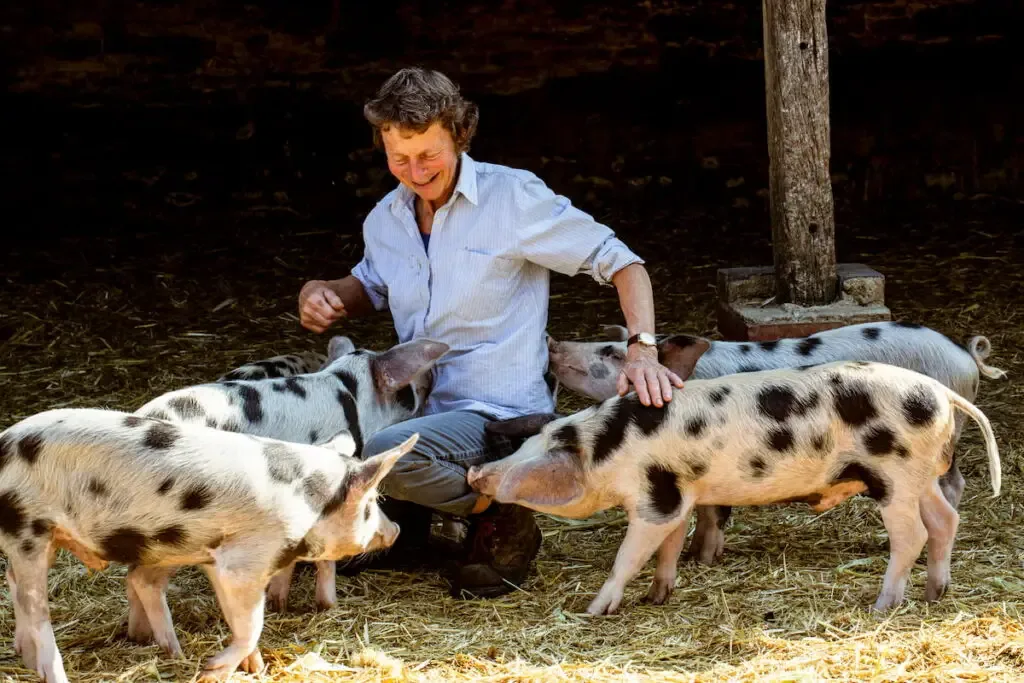
Dealing With Health Issues
Although pigs are considered hardy animals, this doesn’t eliminate their risk of getting sick or contracting diseases. Oftentimes, you can generally sense when pigs are sick. They will have trouble breathing and standing, their skin and eyes change colors, and they could experience a loss of appetite.
But there are certain diseases that take more than just a mere physical observation. These include:
· Internal parasites
In pigs, internal parasites come in different types and forms. The two most common and serious ones are roundworms and tapeworms. The presence of these worms in pigs may appear through several symptoms such as loss of weight and appetite, anemia, and dullness.
In some cases, dead worms may clog pigs’ intestines, causing blockage of the gut and sudden death. Aside from periodical deworming, worms can be prevented in many ways including cleaning the pens, rotational grazing and pastures, herbal treatments, and antibiotic treatments.
· External parasites
Mange, lice, and myiasis are some of the common external parasites found on pigs. Mange is caused by mites that live on pigs’ skin, causing extreme irritation and itchiness. It appears as lesions or scabs on the head, around the eyes, nose, mouth, face, and may gradually worsen into hyperkeratosis.
Meanwhile, lice could cause extreme irritation when they suck the blood out of the skin. The presence of lice in pigs are red spots or bite wounds, itchiness, and the formation of thick skin with a rough hair coat.
Finally, myiasis is caused by flies that lay eggs on open wounds, producing larvae that may cause further irritation or worse, infection.
Treating mange can be done by administering ivermectin under a veterinarian’s advice. But at home, what you can do is maintain good hygiene in and out of the pigpen.
Lice can be treated by using the insecticide benzene hexachloride and myiasis can be treated using Diazona or Supona. Always remember to consult a veterinarian before using any of these controlled medicines.
· Brucellosis
Symptoms of brucellosis in pigs are stiff legs, extreme fever, lethargy, anorexia, bloody discharge of vulva, and endometritis. Boars with brucellosis might also suffer from an inflammation of one or both of their testicles (orchitis).
As of today, brucellosis is one of the deadly diseases without effective treatment. All you can do is keep good hygiene and try to separate pigs with brucellosis from the healthy ones to prevent infection that could kill the whole herd.
· Leptospirosis
Leptospirosis is an infectious disease caused by a bacterium known as Leptospira interrogans carried by rats and other rodents. Symptoms of leptospirosis in pigs are diarrhea, fever, weight loss, and bloody urine.
It can also affect pregnant sows, leading to the birth of weak piglets that may eventually die. Getting rid of the pests is the first step to fighting this issue. Then, a veterinarian will administer an antibiotic like streptomycin, no matter what ages the pigs might be.
· Mastitis
Mastitis is a bacterial infection that generally happens in sows when their mammary organ is inflamed, causing changes in milk production.
Signs of mastitis in pigs are swollen and painful udder, a decrease in milk production, fever, and lethargy. To treat this disease, keep the piglets away from the sows until their udders are fully recovered. Clean the infected areas regularly and use antibiotics to kill all the bacteria.
· Foot and mouth disease
This disease is highly contagious and it affects hooved animals such as pigs, cows, goats, water buffalo, and sheep. Pigs with foot and mouth diseases may suffer from blisters on thin-skinned areas of their bodies such as eyelids, udders, teats, and anus.
In some cases, their hooves could also become loose and fall off. This disease is generally treated with vaccination. Affected pigs will be quarantined to protect the healthy ones from contracting this disease.
· Swine Dysentery
Also known as the black scours or bloody diarrhea, this illness affects pigs of all ages and could also lead to death. Symptoms of swine dysentery in pigs are fever, greyish or brownish feces, slow growth, rough hair coat, and bloody discharges. Usually, a veterinarian will prescribe antibiotics to fight this disease. Breeders should do a thorough disinfecting process to clean the pigpens.
· Greasy Pig Disease
Symptoms of this disease include a formation of brown greasy areas of skin, scabs with no itch, scales, weight loss, or worse, sudden death. In case your pigs are suffering from this disease, consult a vet for antibiotic treatment.
Good hygiene and regular cleaning of the pigpen are some of the ways to combat this illness. Be sure to separate the sick pigs away from the healthy ones until they are fully recovered.
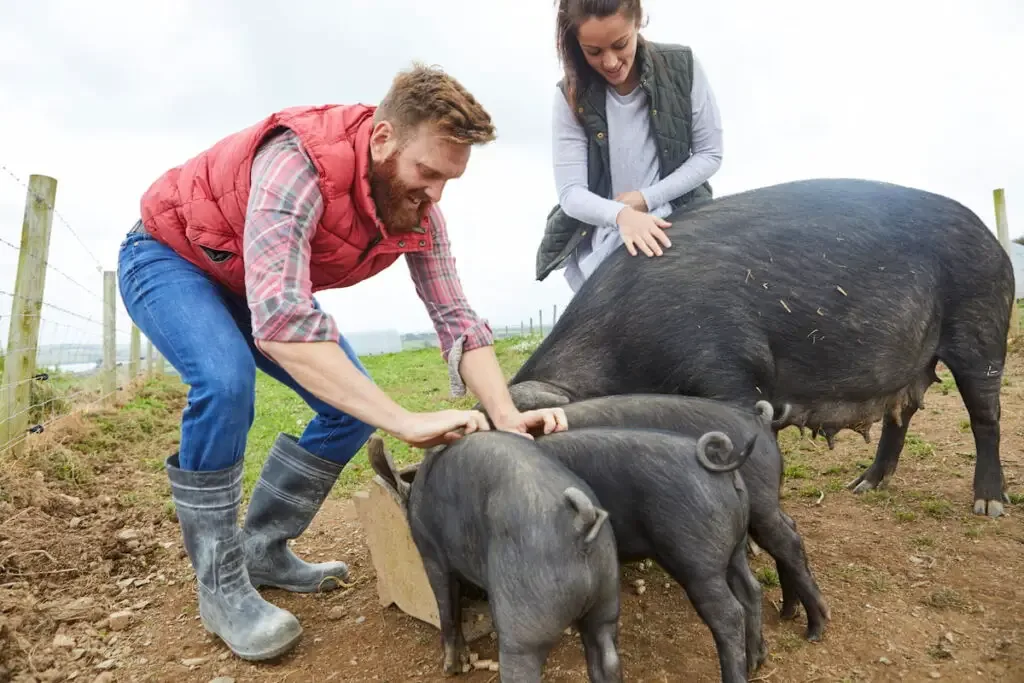
Benefits and Challenges of Raising Pigs
Raising pigs comes with its own perks. It is a learning process, a lifetime experience that requires your long-term commitment. Although you can reap the benefits continuously, you also have to be ready to face a few challenges when dealing with these animals. For instance:
- It takes a lot of preparation, be it physical or mental. Some owners might develop an emotional attachment to the animals that they have raised. Not to mention, you have to be ready to spend a large sum of money for any emergency situation, especially medical treatments.
- Certain breeds are smart and they can find a way to escape their pen. In this situation, you will have to build an escape-proof pigpen or shelters with strong fences. If these animals escape, it might take quite some time to catch them.
- Pigs are voracious eaters. They eat a lot and poop a lot more. Aside from cleaning their feeder, you also have to keep their pen clean. This is important, especially during summer months where the heat might produce a smelly environment inside the pen.
- When pigs are being kept indoors or in a closed housing system, their ability and natural behavior will become restricted in these confined spaces. This will inhibit the pigs’ ability to express their animalistic nature, rendering them to feel bored, distressed, and frustrated.
On the other hand, when you can sustain and keep these animals until they are fully mature, there are many benefits that you can gain including:
- Pigs could provide you with a continuous supply of high-quality meat without breaking the bank. With their high meat-to-bone ratio, they can yield up to 70 percent of delicious meat. This is less costly than buying grocery store meats. Plus, you will always trust the meat that you eat because it comes from the animals that you raised.
- They are low-maintenance compared to other farms animals. For instance, you can use any leftovers or scraps from your kitchen can be used to feed pigs. Feeding slops (a mixture of various leftovers) to pigs are one of the eco-friendly ways to reduce wastes that could pollute the environment.
- Pigs manure can be used to fertilize your land or farm. By collecting their waste or letting these animals roam free inside your property, they can fertilize the soil and promote the better growth of plants. The best thing is that you don’t have to fork out any cash to buy fertilizers in years to come.
- Pigs reproduce at a faster rate compared to other farms animals. Generally, a sow can give birth (farrow) to around 8 to 18 piglets at a time. Due to its gestation period that lasts around 4 months, it can farrow up to two times per year.
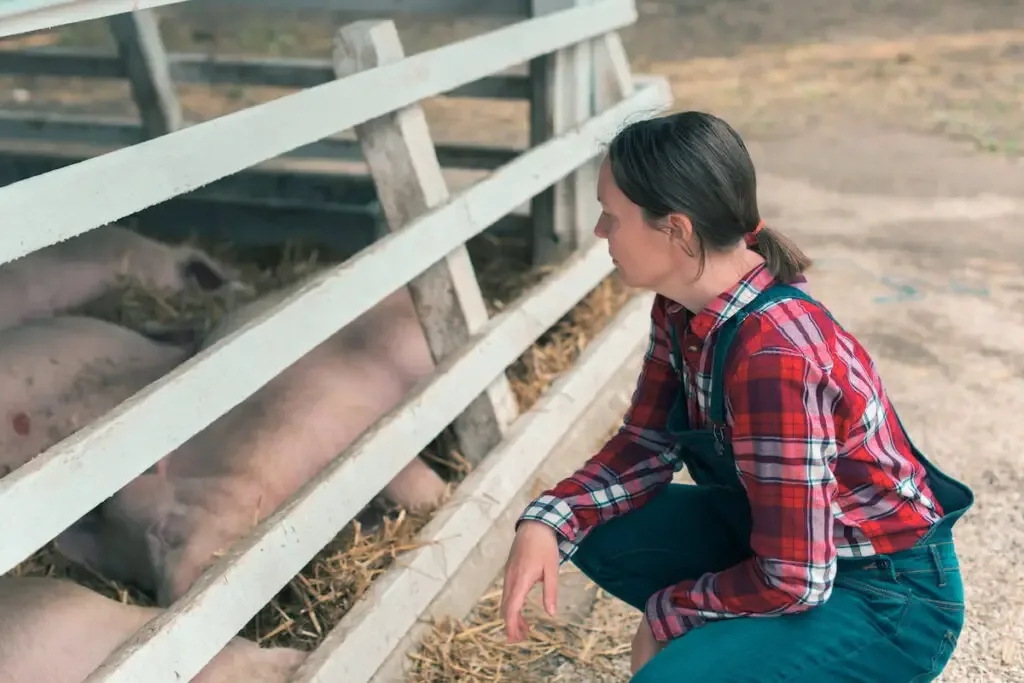
Final Thoughts
With a combination of the best breeds, a thorough plan, a good diet, and a lot of hard work, raising pigs on the farm can become one of the most rewarding activities.
If you’re just starting out, it might take a little time for you to handle a whole herd. But as long as you can focus on just one breed before deciding to add another into the mix, there is no reason why you can’t make it work and enjoy the process along the way.
Citations
- https://www.thepigsite.com/articles/how-to-farm-pigs-feeding
- https://smallbusiness.chron.com/raise-hogs-profit-small-farm
- https://melissaknorris.com/howtoraisepigsformeat/
- http://www.timbercreekfarmer.com/how-to-raise-pigs-naturally/
- https://www.theprairiehomestead.com/2014/12/raising-pigs
- https://toshfarms.net/animal-care/how-we-raise-pigs/
- https://www.motherearthnews.com/homesteading-and-livestock/pig-farm
- https://www.rspca.org.au/take-action/pig-farming
- https://porkgateway.org/resource/introduction-to-raising-pigs/
- https://www.roysfarm.com/raising-pigs/
- https://www.thepigsite.com/articles/how-to-farm-pigs-housing
- https://www.thepigsite.com/articles/how-to-farm-pigs-health-issues
